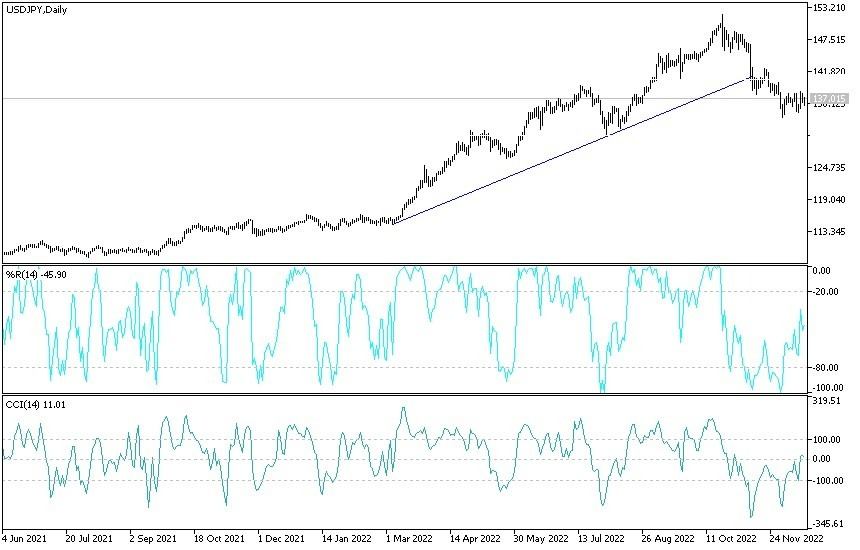At the beginning of this week's trading, the Japanese yen fell, after reports of a possible change in a key agreement between the government and the Japanese central bank fueled by speculative policymakers approaching a tight pivot point. The USD/JPY moved in a bearish momentum within a narrow range between the level of 135.74 and the resistance level of 137.16, settling around the level of 136.95 at the time of writing the analysis, waiting for any news. The Japanese currency jumped as much as 0.6% after Kyodo said on Saturday that Japanese Prime Minister Fumio Kishida may seek to revise a decade-long agreement with the Bank of Japan and consider adding flexibility to its 2% inflation target. This could pave the way for an end to its ultra-loose monetary policy. The yen trimmed gains after a government spokesman denied the report.
The current agreement obliges the government and the Bank of Japan to achieve the 2% inflation target as soon as possible.
The BoJ has long missed Kuroda's original timeline of about two years. However, removing the phrase would go a step further in recognizing that achieving stable inflation is a long-term goal while noting that factors other than time also need to be considered. The latest report on Kishida adds to speculation about a possible policy change at the Bank of Japan after Governor Haruhiko Kuroda steps down in April. The development comes after an aide to Kishida told Bloomberg earlier this month that there was a possibility of a new deal with the central bank.
For his part, Japan's Chief Cabinet Secretary Hirokazu Matsuno said there were no plans to revise the agreement with the Bank of Japan, and he hoped the central bank would continue to work toward the inflation target. The Bank of Japan is expected to keep the settings on hold at its policy meeting on Tuesday.
“The weekend news highlights a clear level of unease on the part of the government with regard to the degree of yen depreciation it has endured this year,” said Rodrigo Cattrell, currency analyst at the National Australia Bank in Sydney. “Next year provides an opportunity for a reset. As has been pointed out, it allows for a more flexible approach to the objectives of the Bank of Japan,” he added.
In general, the Japanese yen was the worst-performing major currency this year, as it fell by more than 15% against the dollar. Kuroda insisted on buying huge amounts of government bonds and restricted returns, while it rose elsewhere in the world, such as in most central banks. During the 2022 trading year, the Japanese currency fell to its lowest level in three decades, at 151.95 in October. The yield on Japan's main five-year bond rose 2.5 basis points to 0.145% early Monday, hitting the highest level since February 2015.
Expectations are growing among investors and economists that Kuroda's successor will call for a policy review sometime after he takes over as head of the central bank. Bloomberg reported last week that Bank of Japan officials saw the possibility of a policy review next year, after closely examining wage growth and any slowdown in the global economy, according to people familiar with the matter.
USD/JPY Forecast
There is no change in my technical view of the performance of the USD/JPY currency pair, as the general trend still tends to be bearish. The general outlook for the currency pair will not change to bullish without moving towards the psychological resistance level of 140.00 again. I still prefer to buy the dollar/yen from every downward level, and the closest support levels for the currency pair are currently 135.30 and 134.00, respectively.
Today, the dollar-yen pair will be affected by the update of the monetary policy decisions of the Japanese Central Bank and whether or not investors are willing to take risks.

Ready to trade our Forex daily forecast? We’ve shortlisted the best Forex brokers in the industry for you.

